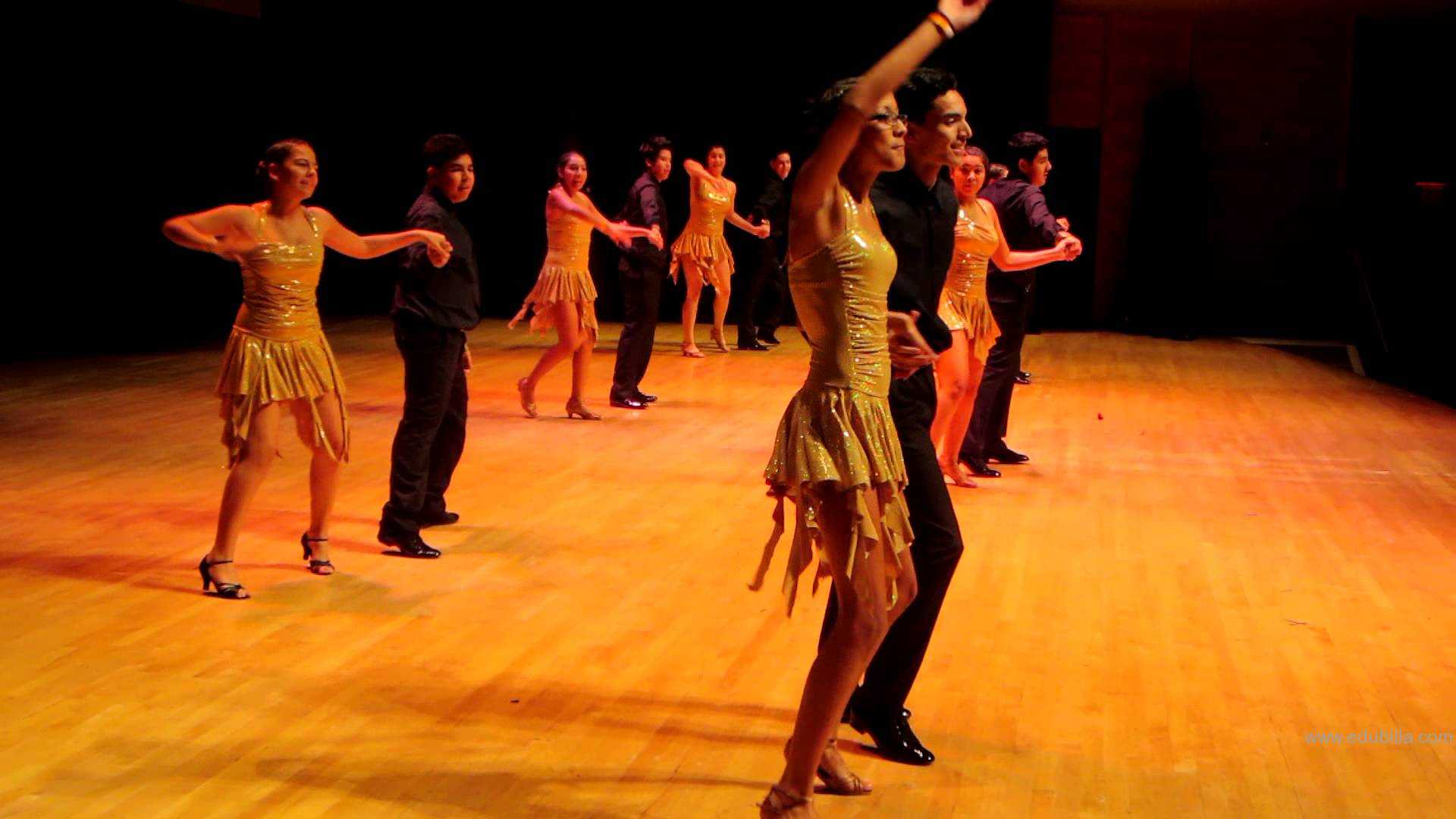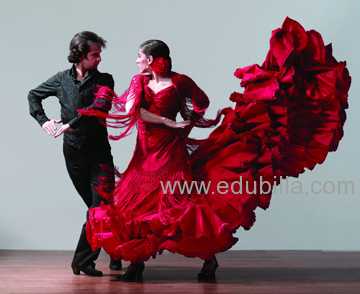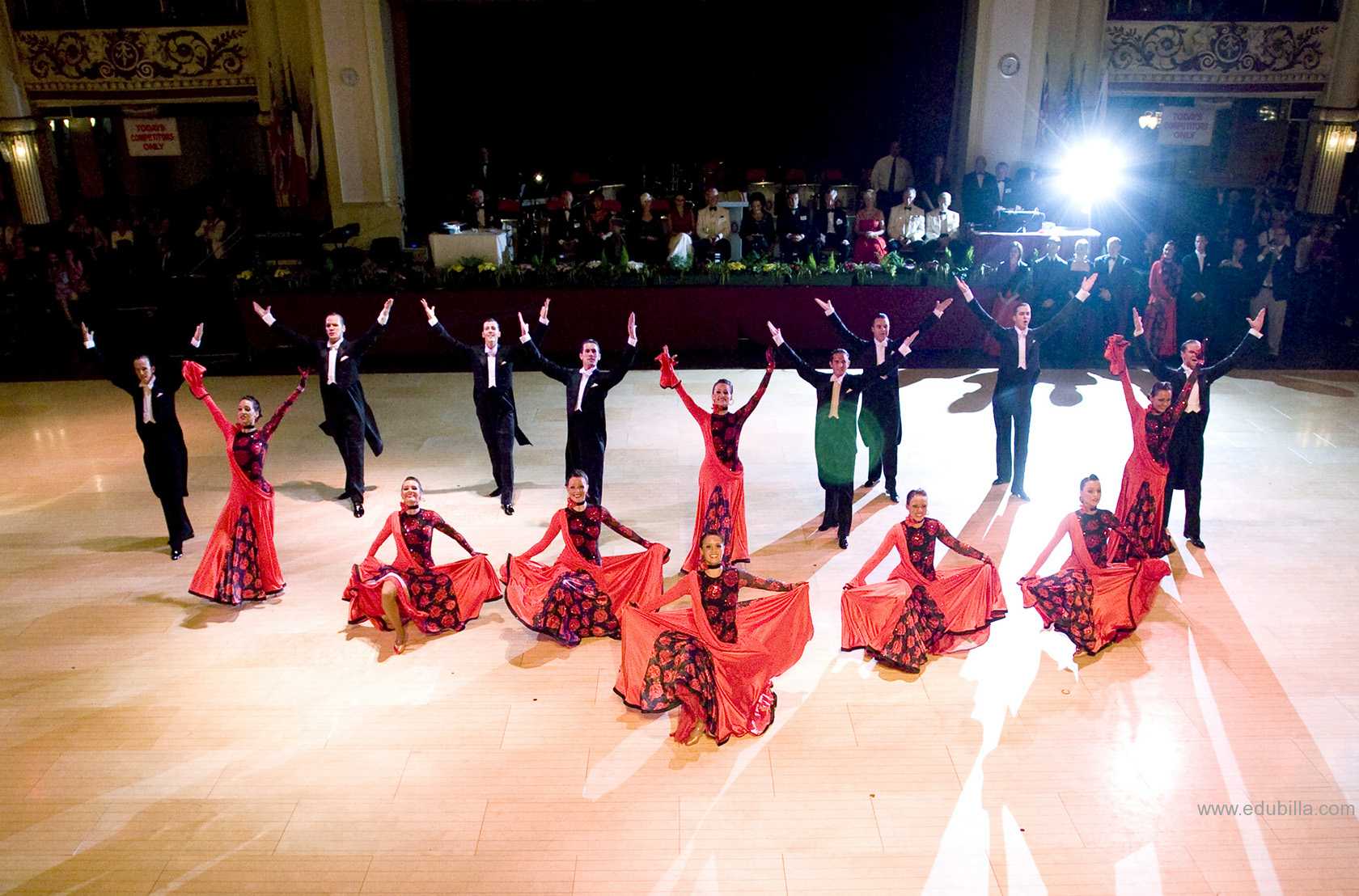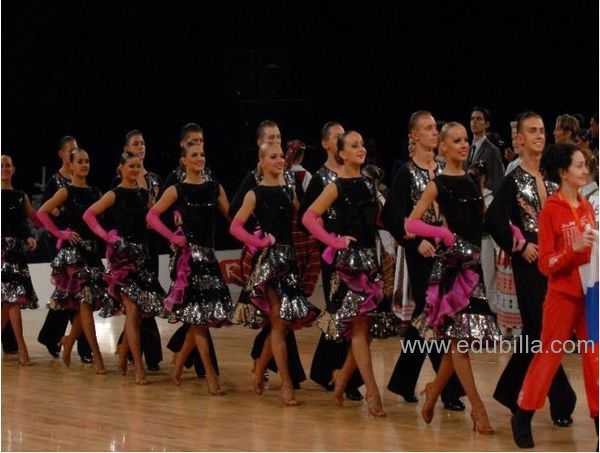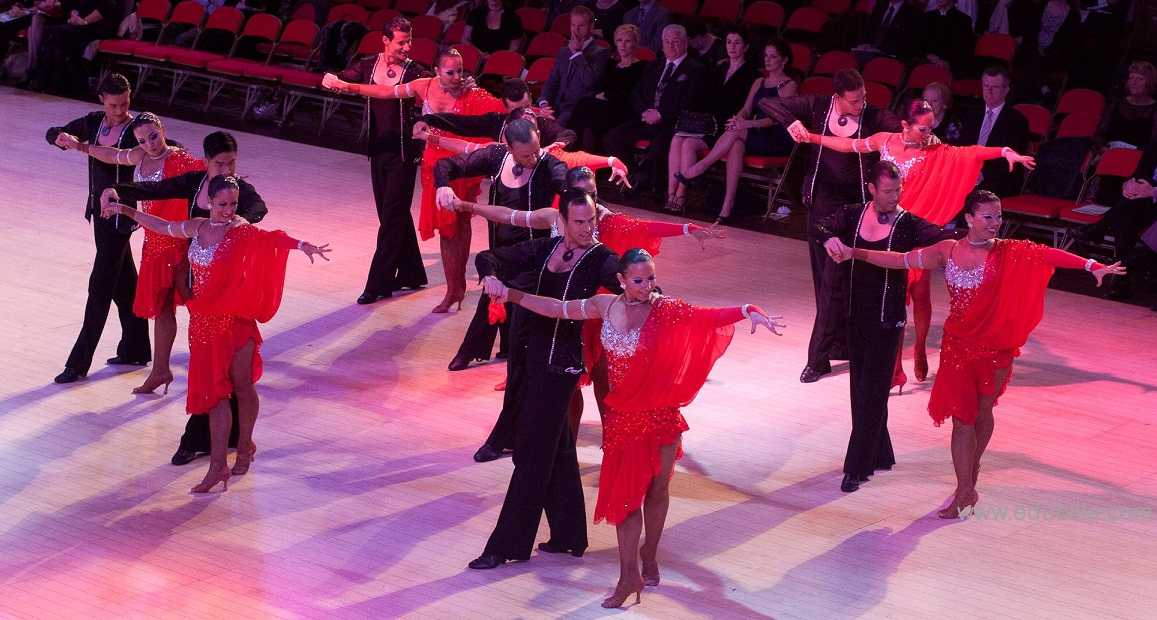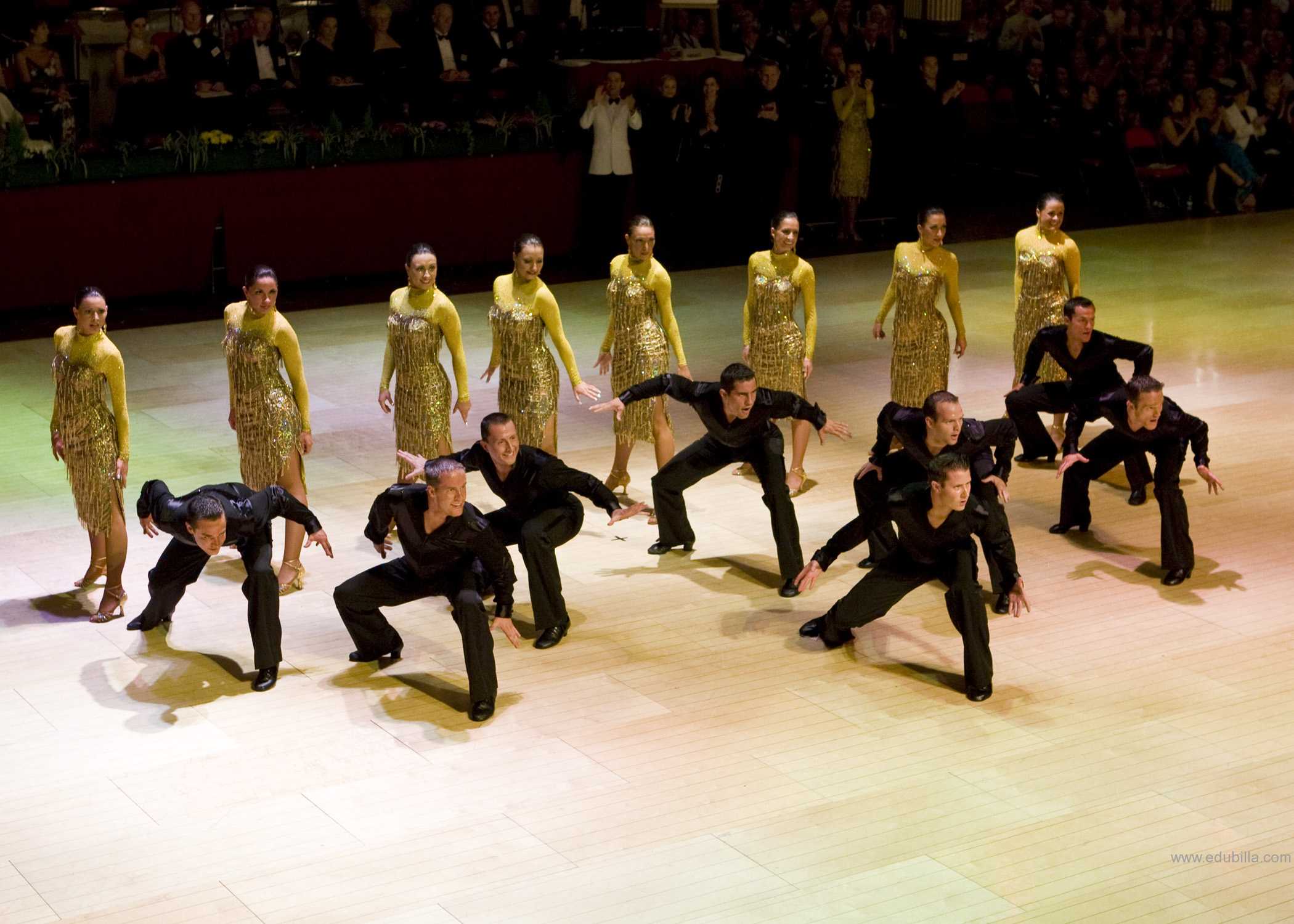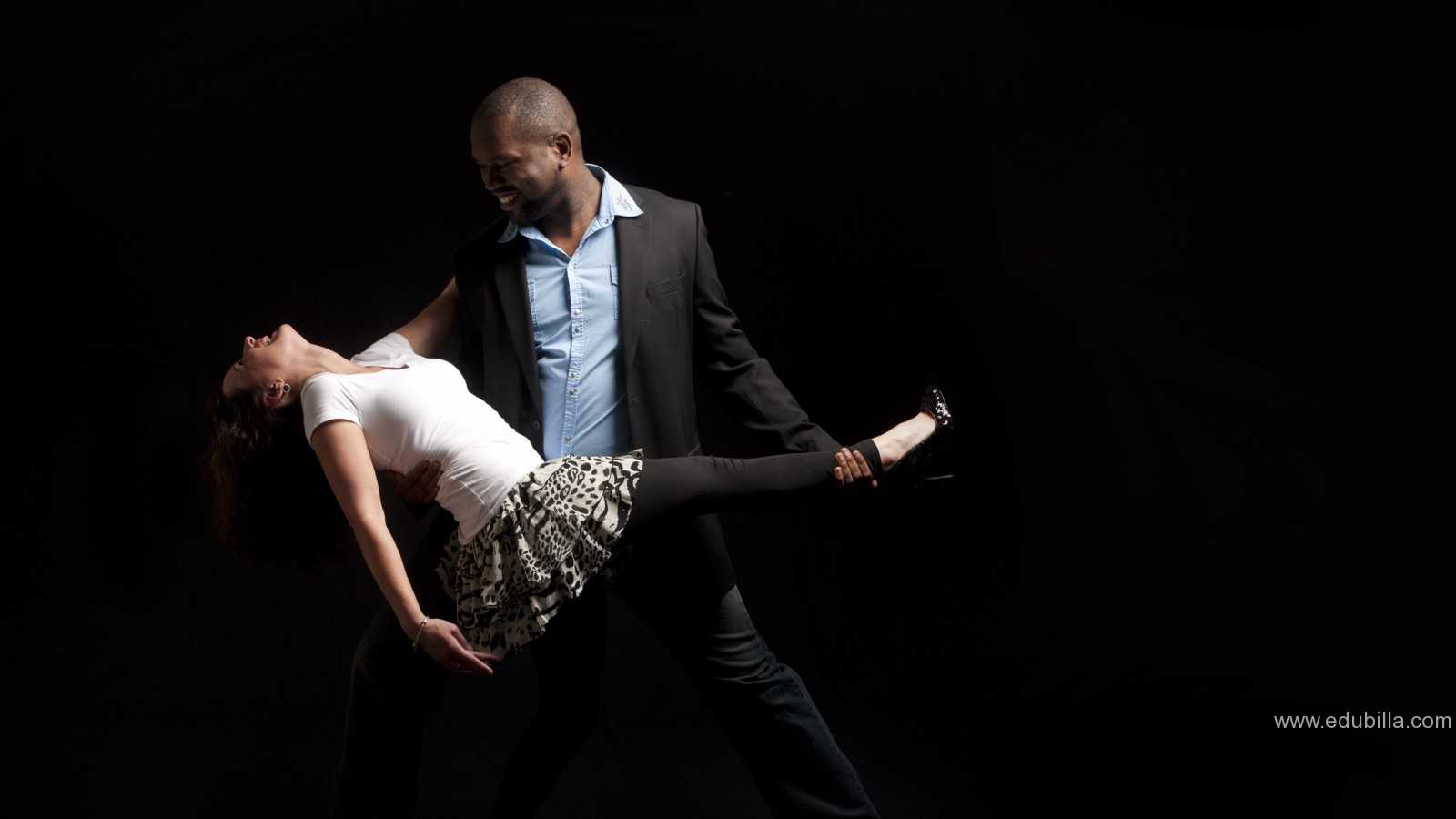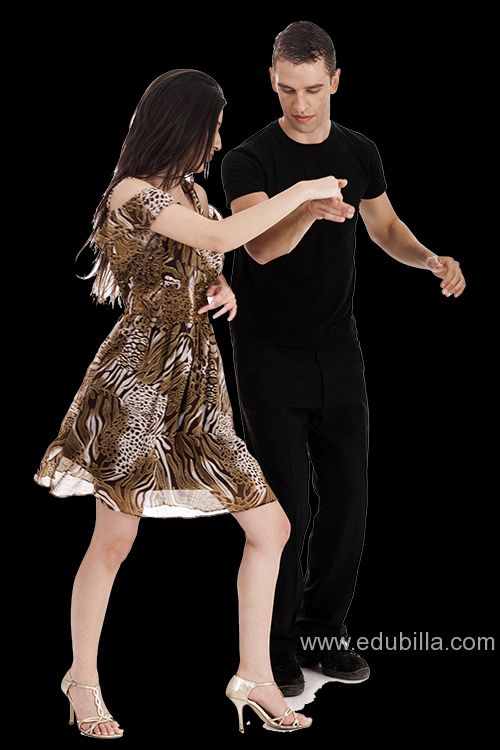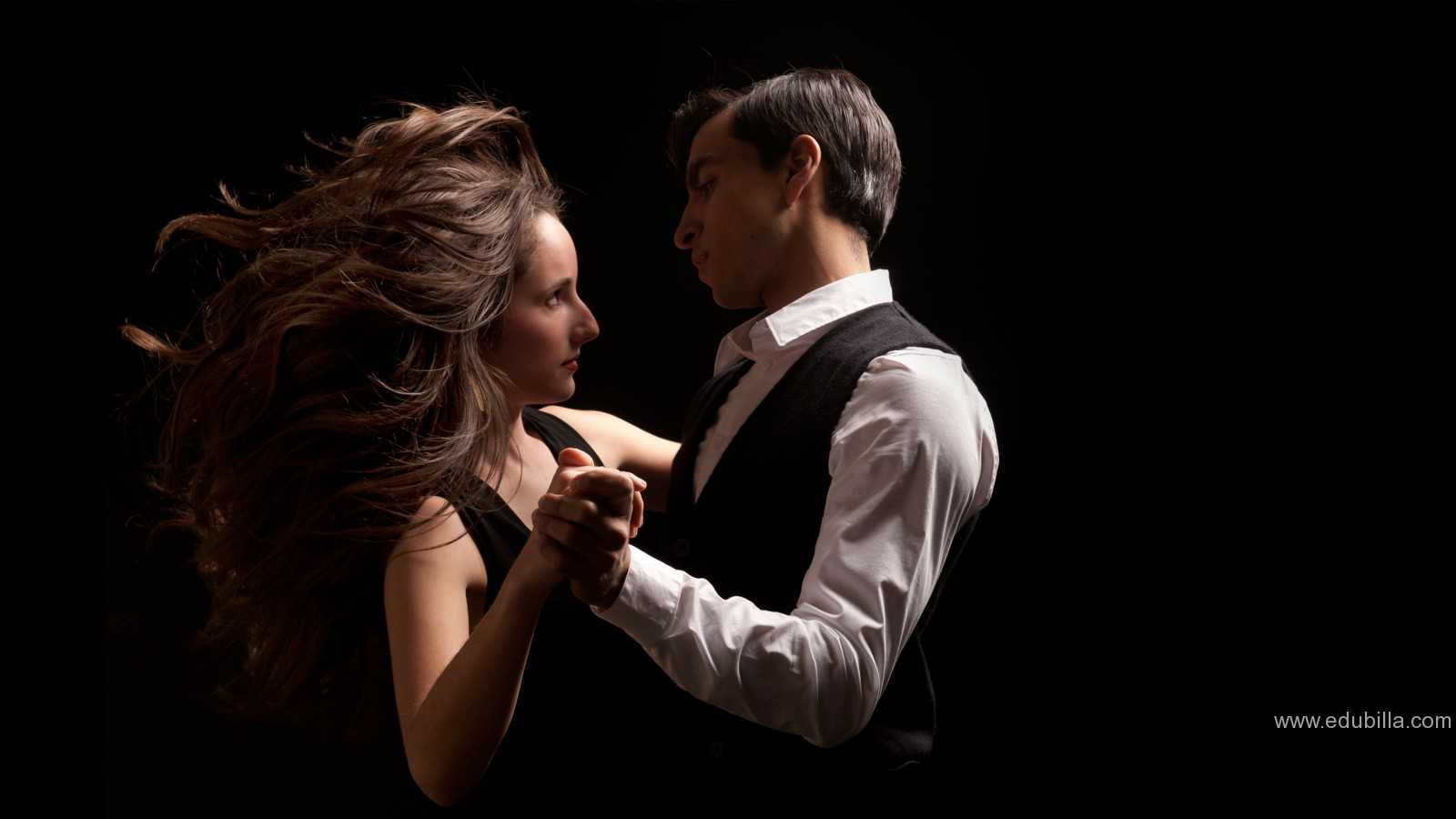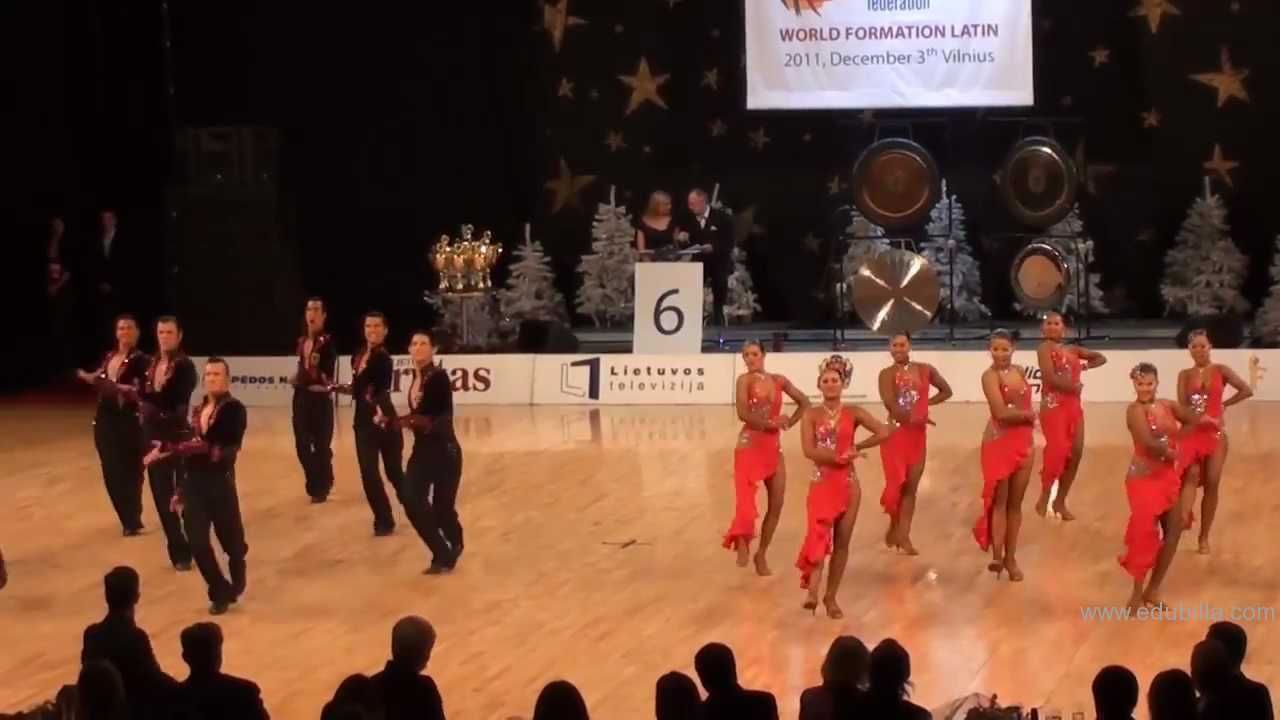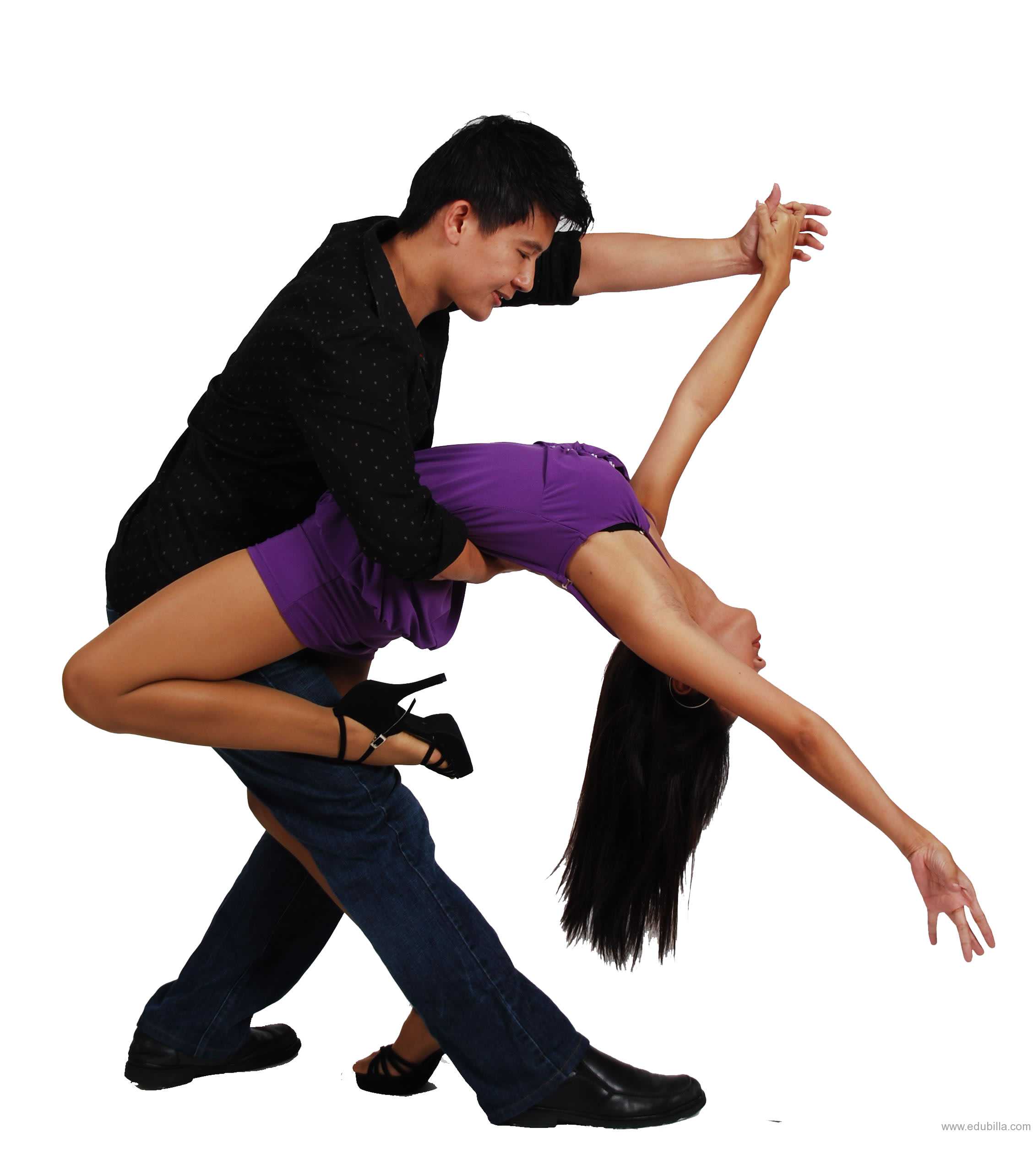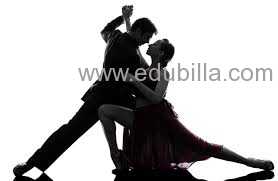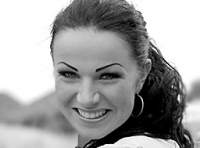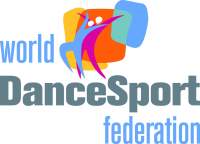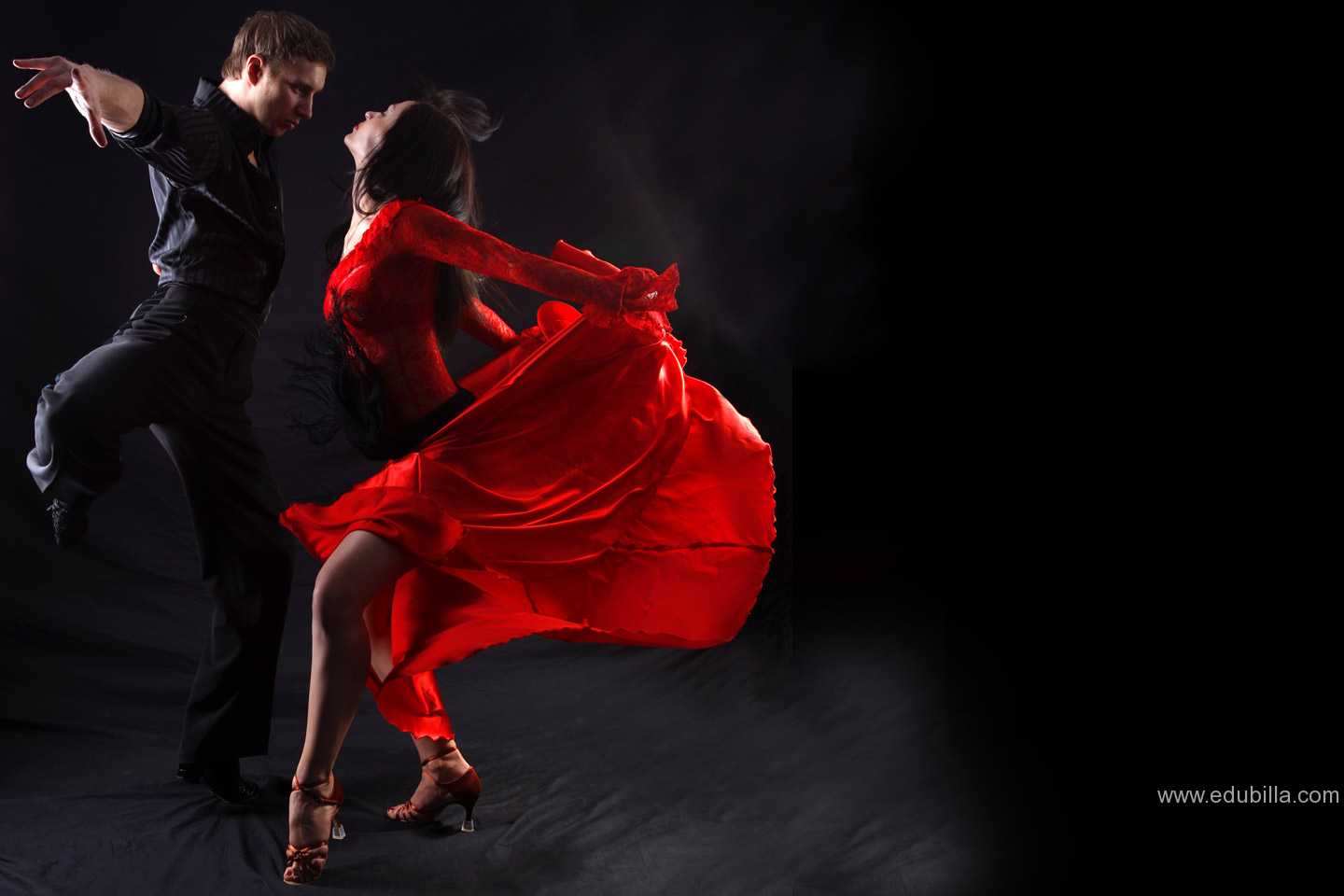
Overview Of Latin Dance
Latin dance is a general label, and a term in partner dance competition jargon. It refers to types of ballroom dance and folk dance that (with few exceptions) originated in Latin America.
The category of Latin dances in the international dancesport competitions consists of the cha-cha-cha, rumba, samba, paso doble, and also the jive of United States origin.
International Latin Dances:
Cha-Cha:
Energetic and sassy, the Cha-Cha is danced to authentic Latin music or Latin Pop. It is an offshoot of the Mambo.
Rumba:
The Rumba is known as the "dance of love." Danced to romantic, Latin love songs, it is fun and quite easy to learn.
Samba:
Often difficult to master, the Samba is a lively Brazilian dance consisting of many jumps and turns. The Samba is an extremely fast dance.
Paso Doble:
Meaning "two step" in Spanish, Pasa Doble is a lively, march-like dance with significantly less hip movement.
Jive:
A variation of the Jitterbug, the Jive consists of dance steps derived from country dancing.
Latin Style:
Compared to other ballroom dances, Latin dances are generally faster-paced, more sensual, and have more rhythmic expression. The latin dances are for couples, typically a man and a woman. Partners sometimes dance in a closed, tight position, and sometimes hold only one hand. Latin dancing, as Latin music, is sultry and physical. Quick paced rhythms and playful movements make the various Latin dances endlessly entertaining, sometimes even breathtaking.
The Latin dances are derived from the music to which they are danced. The component of the music that most differentiates the dances is their fast or slow tempo.
Game Rules
CHANGES TO FREESTYLE/SOCIAL:
STATES: No Social/Freestyle for Couples during State Championships
Couples will be judged ONLY on their Choreography (100% of final score) and there will be no Freestyle or Social during the State Championships. This applies for all competitors in all couples divisions and styles (Amateur, Pro-Am, Semi-Pro, Professional). The Top 4 ranking Competitors will progress to the Semi-Finals.
FINALS: Social/Freestyle ONLY for Pro-Am and Professional Competitors during Finals
This year, Amateur Couples, Semi-Pro Couples and Open Couples will not be required to compete with Freestyle or Social in either States or Finals. They will be judged ONLY on their Choreography ( 100% of final score).
Professional and Pro-Am Couples will be required to compete in the Semi-Finals/Round 1 with a Social (No lifts or tricks permitted). There will be 4-6 Couples sharing the stage during the Social component. The winning Couple from the Social will receive the title Australian Social Champion for that style. The Top 4 will progress to the Finals/Round 2, where their Choreography will make up 100% of their final score.
NEW OPEN COUPLES DIVISION:
In 2015 we have introduced a new Open Couples Division for Salsa and Bachata Couples
This means that an Amateur can compete with a Semi-Pro and a Semi-Pro can compete with a Professional.
PRO-AM COMPETITORS:
For the 2015 National Finals, Pro-Am divisions will be split based on whether the Amateur competitor is Male, Female or Masters (35+)
Pro-Am Divisions will be split into three separate divisions, Pro-Am Male, Pro-Am Female or Pro-Am Masters.
Please note that Pro-Am Male and Female divisions may be combined if they do hold the minimum required number of entries. This is at the discretion of the Competition Organisers and Competitors will be informed of the decision.
PROFESSIONALS COMPETING IN PRO-AM:
How many times you can compete?
Entrants can compete in as many divisions as they are eligible to compete in, but can only compete once in each division, with the exception of Professional Competitors in Pro/Am divisions in the Latin category, who can each compete up to 2 times in a single dance style/division.
LAST MINUTE QUALIFIERS:
Competitors will need to request approval in advance to compete at the Last Minute Qualifiers in place of their local State Championship round. We have strict requirements for eligibility into the Last Minute Qualifiers (e.g. competitor is overseas and can provide documentation to evidence this). Contact us as early as possible to make sure you are eligible for the Last Minute Qualifiers.
SA, WA, TAS, NT & NZ COMPETITORS
For any competitors who reside in a State without a qualifier, they will immediately progress to the Semi-Final round, without the need to qualify in the Last Minute Qualifiers.
COMPETITORS CHECKLIST:
Please make sure you take a look at the competitors checklist before the competition.
Equipments Need For Latin Dance
Latin Dance WoMen's Dresses:
- Latin competition top&dress
- Latin competition Pants
- Latin Dance Shoe
- Latin Dance hair/makeup for ladies
Latin Dance Men's Dresses:
- Men's Dance Shoe
- Men's Pants
- Men's Shirts
History Of Latin Dance
Latin dances have enamored many across the world. These dances, marked with sensual moves and electric energy, have great history to them. Most of these dances have their origins linked to the African drum beats. Let's take a look at their history and their impact on the world today.
popularity:
Many popular dances originated in Latin America, and so are referred to as Latin dances. International Latin is the name of a category of International style ballroom dances. International Latin consists of the following five dances: Cha-Cha, Rumba, Samba, Paso Doble and Jive. These dances are now performed all over the world as Latin-American dances in international DanceSport competitions, as well as being danced socially.
Latin dance is gaining popularity on dance floors everywhere. Movies about Latin dancing, ones that portray the beauty of the art of Latin dancing, seem to be favorites among dancers and non-dancers alike. Besides being a staple in the ballroom, many Latin dances are also being taken to country-western dance floors. Learning Latin dances is fairly easy, as most of the dances are made up of the same basic foot steps.
Latin Dance Basics:
The term "Latin dance" may be used in two different ways: to denote dances that originated in Latin America and to name a category of International style ballroom dances.
Development of Latin Dance:
- Different dances developed in separate countries, with some dances spreading over several regions and others being limited to one city.
- Many popular dances of today that are associated with Latin America were largely developed in social spheres, in an organized fashion, and with professional musicians providing the beat.
- Various Latin American regions had independent musical styles, and from each musical genre, or combination of styles, a dance genre was born. For example the Mambo, which originated in the 1940s, was born of a marriage between American swing music and Cuban son music, which dated from the same period.
- Following the music, the movement history, and the rhythms of the soul, Latin dances developed over time and individual steps slowly fleshed out the repertoire of each dance. Many Latin dances still have a significant improvisational component to complement the steps, and the regional influences rooted in each genre date back significantly in time.
Origin Of Latin Dance
Latin dance has a long and complicated history, but the elements that come back again and again are self-expression and rhythm. While some Latin dances are almost wholly descended from one cultural sphere, the vast majority of Latin dances have three distinct influences: the native influence, the upper-class European influence, and the African influence. Dating back at least to the 15th century, which is when indigenous dances were first documented by European explorers, the roots of Latin dance are both deep and geographically far-reaching.
Origins of Latin American Dancing:
Long before men and women were dancing the Rumba or the Salsa, indigenous peoples of South and Central America were developing what we have come to recognize today as Latin dances. On the path to becoming the dances spectators enjoy in competitions and ballrooms today, these earliest ritualistic dances would be influenced by many different European and African styles, both in movement and in music.
A Rich Cultural Heritage of Dance:
The different types of Latin dances offer a rich cultural history when you examine each dance individually and look at the various influences that contributed to it. Many Latin dances have several different forms by now, and what spectators see at ballroom competitions is only the tip of the iceberg. To discover even more styles and genres, check out cultural events such as the Brazilian Carnival in order to experience the many genres of Latin style dancing as well as the cultural and musical histories that are deeply embedded in the dances.
Governing Bodies
World DanceSport Federation (WDSF):
The World DanceSport Federation (WDSF), formerly the International DanceSport Federation (IDSF), is the international governing body of dancesport and Wheelchair DanceSport, as recognised by the International Olympic Committee (IOC) and the International Paralympic Committee (IPC).
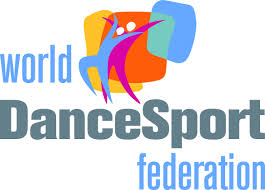
Originally founded in 1957 as the International Council of Amateur Dancers (ICAD), it took up the name IDSF in 1990. In 2011, it was renamed to WDSF to emphasise the global character of the organization.
History of WDSF:
1909 First unofficial ballroom championships in Paris
1957 ICAD founded in Wiesbaden on 12 May 1957
1960 First television broadcast of Dancesport
1990 Name changed to IDSF
1992 Becomes a member of the General Association of International Sports Federations (GASIF) (now SportAccord)
1995 World Rock & Roll Confederation (WRRC) joins IDSF as an Associate Member
1997 Recognised by the IOC
2001 Subscribes to World Anti-Doping Code
2004 International Dance Organisation (IDO) joins IDSF as an Associate Member
2007 Presentation of the VISION 2012 project to the IDSF General Meeting
2008 IDSF and the International Paralympic Committee "enter into a collaboration agreement to promote Wheelchair DanceSport jointly"
2008 United Country and Western Dance Council (UCWDC) joins IDSF as an Associate Member
2008 IDSF General Meeting delegates the Praesidium to pursue a restructure of the federation under VISION 2012
2010 Launches the IDSF Professional Division
2011 Changes name to WDSF on 19 June
Statutory Objects:
As per its Statutes, WDSF pursues the following objectives.
To advance, promote, and protect the character, status and interests of DanceSport worldwide.
To develop standardised rules governing international competitions.
To author and enforce Codes of Conduct and Standards of Ethics for both athletes and officials.
To advise and assist the WDSF National Member Bodies and the Associate Members in the administration of DanceSport in their countries and organisations.
To represent DanceSport in the Olympic Movement.
WDSF Structure:
Democratic and efficient describe the style of governance and the structure of WDSF. The WDSF General Meeting elects the 12-member Presidium and delegates the management to the latter. On the operational level, the Managing Committee – made up of the President, First Vice President, Treasurer, Secretary General and Sports Director – tends to the day-to-day running of the federation. The committee is supported in its task by the standing commissions, by advisers and consultants, and by the administration.
To Visit WDSF Click Here.
Awards Related To Latin Dance
Latin-UK Awards:
The Latin-UK Awards, better known as The LUKAS, is the UK's fastest growing awards ceremony and its biggest Latin-themed celebration, recognizing the contribution of Britain's Spanish, Portuguese and Latin American communities to Music, Dance, Sport, Arts, Business and Society. Created by the UK’s leading Latino publication, Latino Life (www.latinolife.co.uk), The LUKAS is a fantastic, colourful, and entertaining celebration of Britain’s rapid growing passion for all things Latino.
Reflecting the popularity of Latin culture in the UK and worldwide, every year the LUKAS is covered by more than 150 press, radio and TV outlets and over 8,000 web and social networking sites as fans and candidates campaign and vote, reaching an estimated 18 million people. The LUKAS ?makes national TV news in the UK, Latin America and Spain.
Awards for Contribution to Dance:
From village pubs to Saturday night television, Latin dances are captivating UK audiences more than ever before. It’s time to recognise the real stars of the show – from Tango and Salsa to Samba and Flamenco. Here are the awards for the UK’s best dancers, teachers and schools in each of these world famous genres.
Brazilian Dance Performers of the Year
Brazilian Dance School of the Year
Brazilian Dance Teacher/s of the Year
Dance Festival of the Year
Flamenco School of the Year
Kizomba Teacher of the Year
Tango Performers of the Year
Tango Teacher/s of the Year
Tropical Dance Teacher/s of the Year
Tropical Dance Performers of the Year
Tropical Dance School of the Year
Zumba Teacher of the Year
Sample Documents Of Latin Dance
-Lance Armstrong

